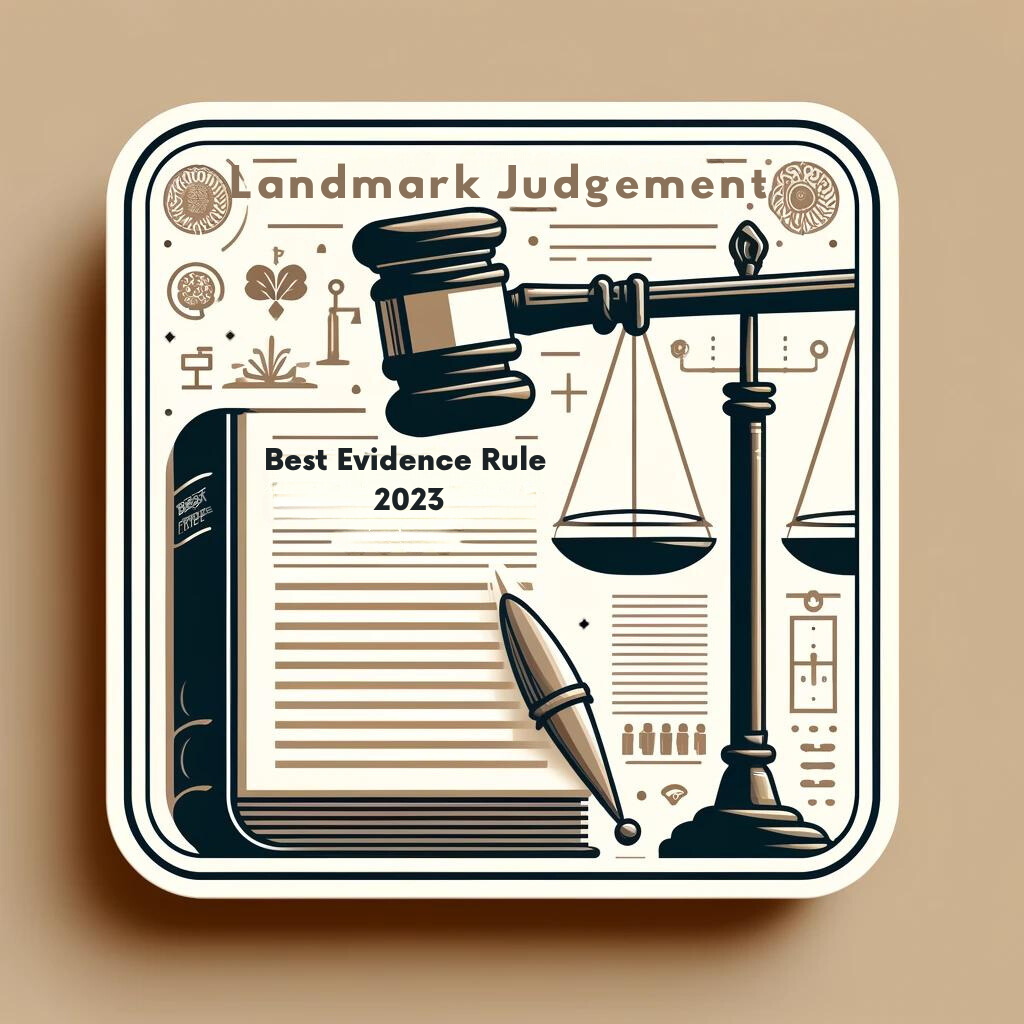Introduction

In a riveting judgment by the Hon’ble Supreme Court, the principles of best evidence under the Indian Evidence Act, of 1872, specifically under Sections 91 and 92, were brought into the limelight. This case revolves around a dispute involving a tenant and the landlord over an agency-cum-license agreement that eventually led to a legal battle concerning the rule of best evidence.
The Supreme Court upheld the High Court’s decision, providing relief to the plaintiffs, thereby setting a precedent on the importance of written agreements and the limitations of oral evidence in legal proceedings. Through this editorial, we delve into the intricacies of this case, exploring the significance of the best evidence rule and its implications for judiciary aspirants. By simplifying complex legal principles, we aim to foster a deeper understanding and encourage critical thinking among our readers.
Facts
Tenant and Agreement Details
In this case, plaintiff no. 1, a tenant of a shop under the Shops and Commercial Establishments Act, and plaintiff no. 2, his father and power of attorney holder, entered into an agency-cum-deed of license with the defendant on May 15, 1975. The agreement permitted the defendant to use the premises as a showroom in exchange for commissions on sales and tailoring, detailed in their agreement dated the same day.
Agreement Expiry and Actions Post-Expiry
The agreement expired on May 14, 1980, without renewal. Despite this, the defendant trespassed, obliterating evidence of the plaintiff’s possession, and began conducting business as if the premises were theirs. After the expiry, despite demands for account renderings and vacating the premises, the defendant neither provided accounts nor payments, leading to legal action from the plaintiffs.
Legal Proceedings
Legal proceedings commenced with the defendant’s attempt to obstruct the plaintiffs’ claims through a suit for injunction, following the initiation of proceedings under Section 145 of the CrPc by the plaintiffs. They sought a decree for possession, damages, and payment of commissions. The defendant contested, claiming the agreement to be a sham, an assertion rejected by both the Trial Court and the High Court, favoring the plaintiffs.
Issues Involved
Validity of the Defendant’s Claim
The critical issue revolves around the defendant’s claim that the agreement was a sham. This contention challenges the authenticity and enforceability of the agreement, raising questions about the applicability of the rule of best evidence and the legal implications of such a claim.
Observations
Rule of Best Evidence
The Supreme Court’s discussion on the rule of best evidence highlighted the complementary nature of Sections 91 and 92 of the IEA. The Court emphasized that the law prefers superior evidence (written agreements) over inferior evidence (oral testimonies), especially when parties have intended a written document to be a conclusive statement of their agreement.
Supreme Court’s Findings in the Case
In its findings, the Supreme Court noted that the defendant’s actions, including account submissions and commission payments, were following the agreement, thus invalidating the claim of a sham document. Furthermore, the plea of sub-tenancy was dismissed based on the prohibition under Section 16(2) of the DRA, which underscores the illegality of creating a sub-tenancy without the landlord’s permission.
Conclusion
In the labyrinth of legal proceedings, the Supreme Court’s affirmation of the rule of best evidence, as encapsulated in Sections 91 and 92 of the Indian Evidence Act, 1872, serves as a beacon of clarity and principle. This landmark judgment not only reiterates the sanctity of written agreements in the eyes of the law but also underscores the futility of contravening established legal frameworks.
For judiciary aspirants, this case exemplifies the rigor and precision with which the Indian judiciary approaches matters of evidence and contractual obligations. The Court’s unwavering stance against the acceptance of unlawful pleas highlights the importance of legality and justice over mere technicalities. This judgment, thus, not only enriches the legal discourse on the rule of best evidence but also fortifies the foundational principles of fair and equitable justice. As aspirants poised on the threshold of their legal careers, let this case inspire a deep-seated respect for the rule of law and an unwavering commitment to upholding the principles of justice. Let it be a reminder that in the realm of law, evidence is the cornerstone of truth, and truth is the very essence of justice.

